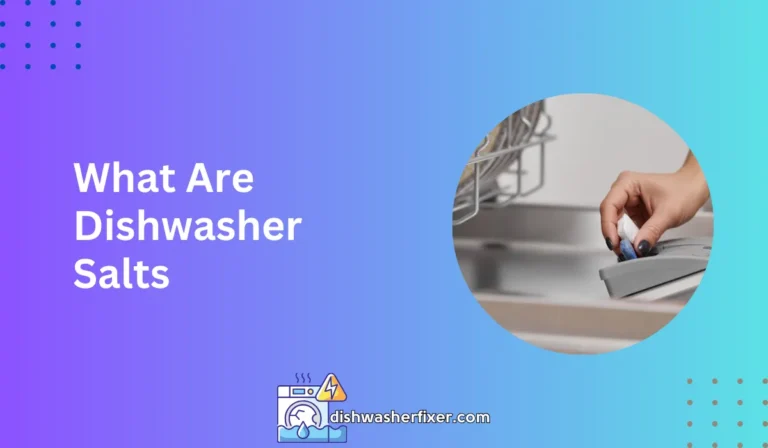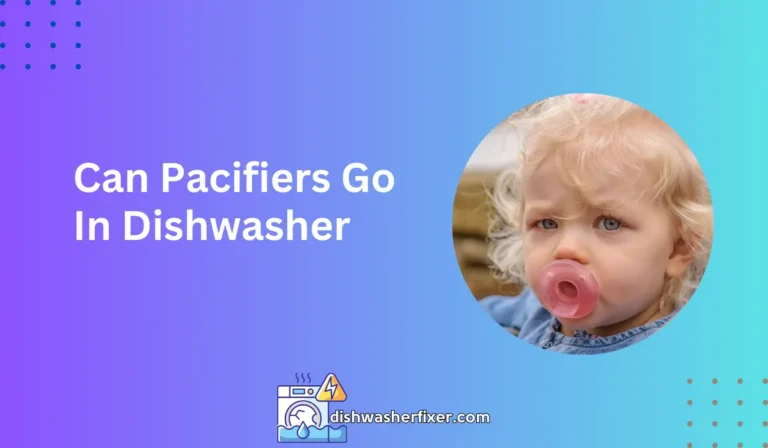What is Dishwasher Prewash? Unveiling the Mystery for Sparkling Dishes
Dishwasher prewash is a short, initial rinse cycle that removes loose food particles from dishes before the main wash. It helps prevent clogs and ensures a more effective cleaning by softening tough residues.
Understanding Dishwasher Prewash

Explanation of Prewash Cycle in Dishwashers
The prewash cycle in a dishwasher is similar to soaking your dishes in the sink. It’s a short, initial rinse that sprays water over the dishes, often without detergent, to remove loose food particles.
This cycle is especially helpful for dishes that have been sitting for a while and have dried-on food or for those that might need a little extra attention before the main wash.
The Purpose of Prewash: Dealing with Heavily Soiled Dishes
When you have heavily soiled dishes or pots and pans with baked-on food, the prewash cycle acts as a preliminary attack on these tough messes. It loosens and rinses away food residues, making it easier for the main wash to thoroughly clean the dishes.
Differences Between Prewash and Main Wash Cycles
The main difference between prewash and main wash cycles is the level of intensity and the use of detergent.
Prewash is a gentler, shorter cycle intended to rinse off surface grime, while the main wash is longer, uses hot water, and detergent to sanitize and clean the dishes completely.
When to Use the Prewash Feature
Consider using the prewash feature when you’ve had a big dinner party or if you’re loading dishes that have been sitting out overnight.
It’s also useful when you’re dealing with dishes from cooking sticky or starchy foods that might need a bit more help to get clean.
The Benefits of Using Prewash

Improved Cleaning Effectiveness for Difficult Food Residues
By using a prewash cycle, you’re giving your dishwasher a head start on cleaning. It’s particularly effective for food like lasagna or oatmeal, which can be challenging to remove once they’ve hardened.
The prewash softens these residues, leading to a more successful cleaning outcome in the main wash.
Prevention of Food Particles from Redepositing on Dishes
The prewash helps keep the water fresh for the main wash by flushing away food particles. This prevents the particles from being swished around during the main wash and sticking back onto the dishes, which can be frustrating and counterproductive.
Reduction of Strain on the Main Wash Cycle
By removing the larger food particles during the prewash, the main wash can focus on sanitizing and dealing with finer particles and greases.
This makes the main wash more efficient and can even reduce the time and energy required to get your dishes sparkling clean.
The Impact on Dishwasher Maintenance and Longevity
Using prewash can also have a positive impact on the maintenance and longevity of your dishwasher. It prevents the filters from becoming clogged with food debris, which can lead to performance issues and costly repairs down the line.
Best Practices for Dishwasher Prewash

How to Load Dishes for Optimal Prewash Results
To maximize the effectiveness of the prewash, make sure to scrape off any large food pieces before loading. Arrange heavily soiled items facing downwards and towards the spray arms, ensuring that the water can reach all surfaces.
Appropriate Detergent Usage for Prewash Cycles
Most dishwashers that feature a prewash cycle do not require detergent for this initial rinse.
However, if your dishes are extraordinarily dirty, you might consider adding a small amount of detergent to the prewash compartment or directly into the machine.
Situations Where Prewash May Not Be Necessary
If you tend to rinse your dishes before loading them into the dishwasher or if you’re dealing with only lightly soiled items, you might skip the prewash. This saves water and energy, contributing to a more environmentally friendly kitchen routine.
Energy and Water Consumption Considerations
While prewash can be incredibly beneficial, it’s also essential to consider its impact on your energy and water bills. Use the prewash feature judiciously, especially if you’re trying to conserve resources or reduce your household expenses.
FAQs About Dishwasher Prewash
What exactly is a dishwasher prewash?
A dishwasher prewash is a brief rinse cycle that occurs before the main wash, designed to remove loose food scraps and prevent clogs in the machine.
Is a prewash cycle necessary for all dish loads?
Not all dish loads require a prewash cycle; it’s most useful for dishes with dried-on or tough food residues.
Does prewash help in cleaning dishes more effectively?
Yes, prewash helps soften and remove food particles, which can lead to a more thorough cleaning during the main wash cycle.
Can skipping the prewash cycle save water?
Skipping the prewash cycle can save water, particularly if dishes are pre-rinsed by hand or if the dishwasher is equipped with advanced sensors that adjust the wash cycle accordingly.
Will using prewash prevent dishwasher maintenance issues?
Using the prewash cycle can help prevent maintenance issues by reducing the likelihood of clogs from food particles.
Final Thoughts
The dishwasher prewash phase serves as an initial rinse to remove loose food scraps from dishes.
This step is crucial as it prevents drain clogs and enhances overall cleaning efficiency by softening hard residues, setting the stage for the main wash cycle to effectively do its job without obstruction.





